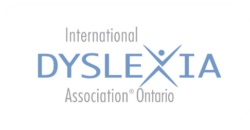Literacy LIFTER (Letter Identification and Formation for Transcription and Early Reading) is a free tool designed to empower educators and caregivers in supporting students’ handwriting and early reading skills. It provides users with evidence-based materials to teach handwriting and letter knowledge (i.e., letter names and […]
In the “Teaching TV: Learning with Television” lesson from Elizabeth Verrall’s five-part unit for elementary classrooms, students are introduced to television as an informative source and its presentation from specific perspectives. The lesson aims to cultivate students’ ability to derive information from media, identify and […]
The “Teaching TV: Television as a Story Teller” lesson, within Elizabeth Verrall’s comprehensive five-part unit, equips teachers with creative strategies for TV education in elementary classrooms. This lesson guides students in exploring television’s role as a narrative medium. Key learning outcomes encompass understanding how media […]
Watching this webinar from PaTTAN, you will learn why summarizing has been identified through research as highly effective for developing comprehension and writing. It defines a quality summary and how it differs from retelling or paraphrasing. Practical suggestions for explicitly teaching summary writing based on […]
This book is an excellent, reader-friendly resource for kindergarten teachers and Early Childhood Educators. While infant and toddler development takes place before the Ontario curriculum kicks in, the authors are American. Their recommendations for preschoolers generally align with the age of our Year 1 kindergarten […]
Sentence combining is an evidence-based practice that helps students improve both their writing skills and reading comprehension. In this valuable book, the author outlines the importance of the sentence and what sentence combining actually is, as well as how to teach and assess it. Also […]
In this book, the authors share background information on how writing develops, and a research base for three key elements: handwriting, spelling and composition. The following chapters provide practical classroom advice for teaching all three, including several chapters dedicated to genre-specific writing instruction: book reviews […]
This blog post by Joan Sedita of Keys to Literacy highlights the research behind creating specific product goals in writing, emphasizing that providing students with specific guidance on the task, audience, and purpose. A WAG template (Writing Assignment Guide) is provided, as well as completed […]
Joan Sedita, founder of Keys to Literacy, explains the two key steps students need to learn in the revision process when writing: thinking critically about what they have written and how they can make improvements and proofreading.
The ultimate goal of writing is communication, says Joan Sedita, founder of Keys to Literacy, who adds that teachers can help students struggling with transcription or spelling by using other strategies like dictation or drawing to help them develop their writing skills.
Joan Sedita, founder of Keys to Literacy, talks about how using “mentor texts” — short pieces of literature students can read and reread for specific learning purposes — can help students become better writers.
Motivating young writers is not always easy, says Joan Sedita, founder of Keys to Literacy, but some strategies include giving students opportunities to work collaboratively, encouraging students to write about topics that are meaningful to them, and teaching students the power of writing to an […]




